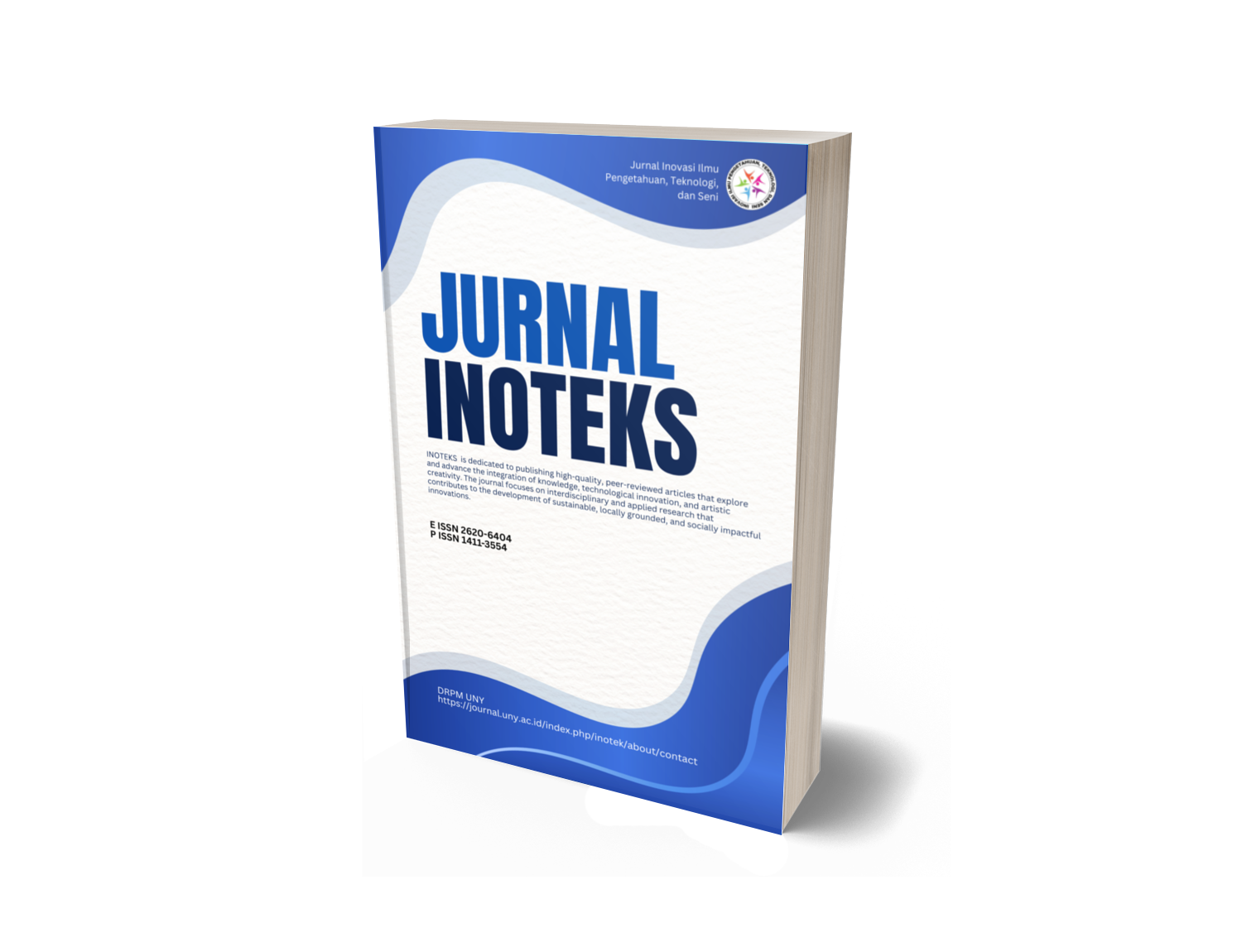UPAYA MEREDUKSI DAGING SAPI GLONGGONGAN MELALUI PELATIHAN PEMBUATAN SUPLEMEN PAKAN TERNAK RUMINANSIA MENGGUNAKAN UMMB (UREA MOLASES MULTINUTRIENT BLOK) DENGAN METODE PERUNUT RADIOISOTOP
DOI:
https://doi.org/10.21831/ino.v15i2.3234Abstract
This Community Service Program (PPM) is triggered by the rise ofbeef traders who sell glonggongan (i.e, pale, soft, and exudates (PSE)) beefas an unfair profit-seeking at the expense of consumer by providingunhealthy, mistreated glonggongan meat. To reduce such a practice, itnecessary to find a healthy way of profitably fattening the cattle. Thesupplementation of cattle feed is one alternative. This Community Serviceactivity aims to: (1) assess the prospects for the use of UMMB supplementsin Jatisarono, Nanggulan District, Kulon Progo Regency in relations to theaspects of community development in a longer term, (2) advise the publicabout the use of UMMB supplements based on the use of radioisotope tracerfor the interests of community of farmers, and (3) provide information to thepublic about the socio-cultural aspects of the use of UMMB supplements insearch for new entrepreneurships.The target audience of the Program is the cow farmer in Jatisaronovillage, District of Nanggulan, Kulon Progo Regency, amounting to 27people. The Methods of Activities include lectures, discussions, information,workshops, limited dissemination. The stages of activity are set asfollows: (1) explaining to the trainees about the various ways for increasedproductivity of beef, (2) discussing the negative impact of unhealthyglonggongan cattle production in terms of health and business, (3) exploringways to overcome difficulties in maintaining beef cattle that can producehigh quality beef, and (4) inviting the participants to practice the productionof UMMB fodder supplements.Upon completion of this program, it is noticed that the cow farmer inJatisarono village became knowledgeable of: (1) the importance of UMMBfodder supplement, (2) the negative effects of unhealthy practice offattening cattle (glonggongan) in terms of health and business, (3) themanure and various elements contained in it to find indicators of the healthlevel of their cattle, (4) the mechanism of production and application ofUMMB fodder supplementAs a follow up, it is expected that cow farmers in Jatisarono village,District of Nanggulan, Kulon Progo will start establishing group to producethe fodder supplement. It is intended for pioneering entrepreneurship andreducing the socio-cultural problems posed by the circulation of unhealthy(glonggongan) beef.
Downloads
Published
2011-08-01
How to Cite
Pujianto, S. R. D. P. (2011). UPAYA MEREDUKSI DAGING SAPI GLONGGONGAN MELALUI PELATIHAN PEMBUATAN SUPLEMEN PAKAN TERNAK RUMINANSIA MENGGUNAKAN UMMB (UREA MOLASES MULTINUTRIENT BLOK) DENGAN METODE PERUNUT RADIOISOTOP. INOTEKS: Jurnal Inovasi Ilmu Pengetahuan,Teknologi, Dan Seni, 15(2). https://doi.org/10.21831/ino.v15i2.3234
Issue
Section
Articles
Citation Check
License
- Authors certify that the work reported here has not been published before and contains no materials the publication of which would violate any copyright or other personal or proprietary right of any person or entity.
- Authors transfer or license the copyright of publishing to Jurnal Civics: Media Kajian Kewarganegaraan to publish the article in any media format, to share, to disseminate, to index, and to maximize the impact of the article in any databases.
- Authors hereby agree to transfer a copyright for publishing to Jurnal Civics: Media Kajian Kewarganegaraanas a Publisher of the manuscript.
- Authors reserve the following:
- all proprietary rights other than copyright such as patent rights;
- the right to use all or part of this article in future works of our own such as in books and lectures;
- use for presentation in a meeting or conference and distributing copies to attendees;
- use for internal training by author's company;
- distribution to colleagues for their research use;
- use in a subsequent compilation of the author's works;
- inclusion in a thesis or dissertation;
- reuse of portions or extracts from the article in other works (with full acknowledgement of final article);
- preparation of derivative works (other than commercial purposes) (with full acknowledgement of final article); and
- voluntary posting on open web sites operated by author or author's institution for scholarly purposes, but it should follow the open access license of Creative Common CC BY-NC-SA License.









